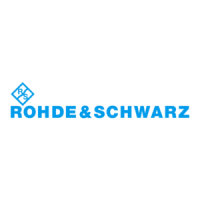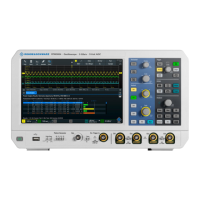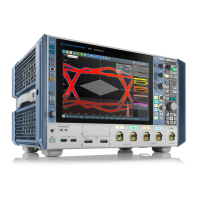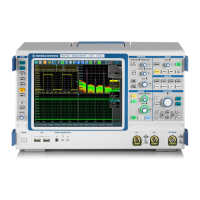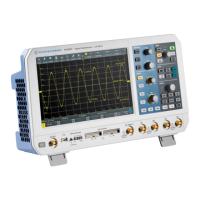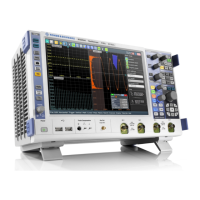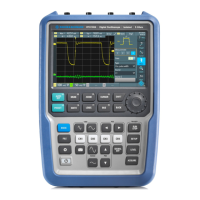Search
R&S
®
RTM20xx
134User Manual 1317.4726.02 ─ 01
10.2 Configuring and Performing Searches
To configure and start a search
Prerequisite: Signal acquisition, reference or math waveform is configured.
1. Press the SEARCH key.
The "Search" menu opens, and the search is enabled.
2. Press "Source" and select the waveform for analysis. All active channel, math, and
reference waveforms are available for selection.
3. Press "Search type" and select the event you want to search for: edge, width, peaks,
runts, specified rise/fall time, setup/hold time, pattern, or protocol-specific events.
4. Press "Setup" and configure the selected search type.
Details:
●
chapter 10.3.2, "Edge Setup", on page 137
●
chapter 10.3.3, "Width Setup", on page 138
●
chapter 10.3.4, "Peak Setup", on page 139
●
chapter 10.3.5, "Rise/Fall Time Setup", on page 139
●
chapter 10.3.6, "Runt Setup", on page 141
●
chapter 10.3.7, "Data2Clock Search", on page 142
●
chapter 10.3.8, "Pattern Search", on page 144
●
chapter 11.5.5.1, "CAN Search Setup", on page 194, requires option R&S RTM-
K3
●
chapter 11.6.6.1, "LIN Search Setup", on page 205, requires option R&S RTM-
K3
5. To restrict the time base range of the source waveform to be searched, press
"Gate" and define the search area.
6. Start continuous acquisition with RUN CONT.
The online search is performed on the displayed data. Search results are updated
permanently and indicated at the top of the diagram.
Stop the acquisition to search the memory data of the latest acquisition.
To analyze search results
1.
Stop the running continuous acquisition, or acquire one waveform with RUN N× SIN-
GLE.
2. Press "Events".
3. Press "View event table" in the "Events" menu.
The first five search results are listed in a table.
4. To select a search result, turn the NAVIGATION knob.
Configuring and Performing Searches
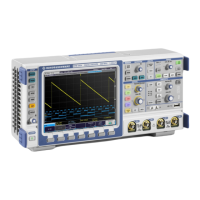
